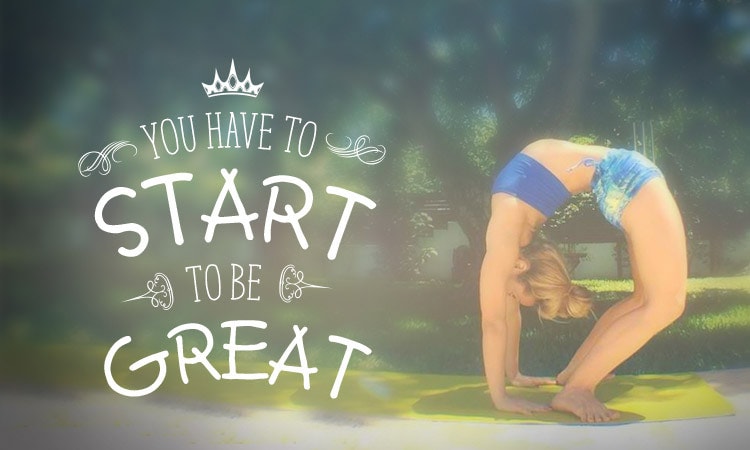Some people love backbends, some people hate backbends. Regardless of your personal preference, however, backbending is an important part of the yoga practice that must be integrated in your daily discipline.
For those with natural flexibility, it will be tempting to rely on what comes easily and skip over the foundational principles of strength. But long-term practice demands that the flexible students learn to build strength in order to sustain the health of their spine throughout their lifelong practice.
Students who are naturally tighter in their backbends will only progress to deeper postures by balancing their natural strength with flexibility and release.
If you push too hard, too quickly, and force your body to open, you run the risk of creating injury instead of opening with ease.
Start with Urdhva Dhanurasana or Upward-Facing Bow Pose
When you’re ready to work on your backbends, the place to start is with the healthy technique in Urdhva Dhanurasana. Translated into English as Upward-Facing Bow Pose, the essential alignment comes from the image of a perfectly balanced bow or arch.
The weight here is evenly distributed between the legs and the arms. Each joint of the entire body bends over backwards by opening the front body and engaging the back body.
The core muscles of the pelvic floor provide support for the sacrum and the lower back, while the spine lifts up and out of the pelvis to create more space for the arch of the back. The chest rises forward and up so that the sternum lifts, and the breath remains full and deep.
The shoulders are externally rotating so that the elbows can be completely straight, and weight can press down through the hands into the ground. Every inhalation creates space and length, while every exhalation allows you to move into that inner space.
Urdhva Dhanurasana in Ashtanga Yoga
In the Ashtanga Yoga tradition, Urdhva Dhanurasana is repeated three times, where you hold the posture for five long, deep breaths. Repetition builds endurance.
If you are suffering from lower back pain, it is not advised to push deeply in backbends. Instead, holding postures like Urdhva Dhanurasana in a very light, non-stressful manner for long periods of time (five to 10 breaths) builds the strength to support and heal the back.
Students who are able to maintain healthy alignment through the traditional three Ashtanga Yoga backbends may be ready to proceed to dropping back and standing from the posture.
Being able to fully straighten your arms while keeping the heels pressed firmly into the ground is the first indication that you’re ready to try this next stage of your backbends. If you start dropping back into and standing up from backbends too soon, though, you may predispose yourself to unnecessary pain.
Using the Wall for Support
One of the easiest ways to begin working on standing up and dropping back into Urdhva Dhanurasana is to use the wall. This works well if you don’t have a teacher to help you with this movement, or if you simply have a lot of fear regarding bending over backwards.
To try this, stand two feet away from the wall to prepare. Send your hips forward while pressing into your legs.
Engage your pelvic floor and lift up and out of the hips with the power of core. Inhale and create space in your chest, then exhale and take your hands into prayer. Allow the sacrum to nutate and extend your spine.
Drop your head back as you shift your hips forward. Inhale and reach your arms over the top of your head, exhale as your reach your hands back towards the wall. Stay for a moment to stabilize.
Then send your hips forward, press into your heels, shift the weight forward and return to standing. Let your head hang back and be the last thing to come up. Repeat this three times. When this gets easy, you will be ready to try all the way from standing.
Again, a reminder: you should never force or strain towards achieving the final expression of the pose—your full backbend will come over time. Instead, use your breath and listen to your body to allow yourself to open naturally, and most importantly, enjoy!
Do you have any other tips for doing yoga backbends for beginners? I'd love to hear from you below!


